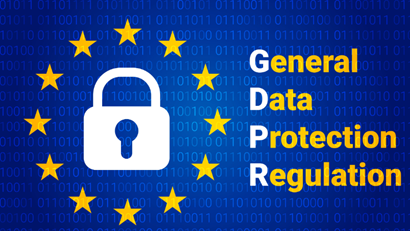India’s DPI: Global Regulatory Challenger
Relevance
- GS Paper 2 Government Policies and Interventions for Development in various sectors and Issues arising out of their Design and Implementation.
- Tags: #DPI #GDPR #Digitalpublicinfrastructure #MintEditorialAnalysis #UPSC.
Why in the News?
The European Union’s (EU) General Data Protection Regulation (GDPR) has set a global standard for data governance. However, India’s Digital Public Infrastructure (DPI) approach offers a new paradigm, embedding regulatory principles into digital infrastructure.
The Brussels Effect: Global Regulatory Influence
- The European Union’s General Data Protection Regulation (GDPR), introduced in 2016, has prompted over 150 countries to integrate its principles into their own legal systems without significant European intervention.
- This influence on global regulations, known as the Brussels Effect, highlights the EU’s ability to shape international standards by establishing comprehensive domestic regulatory frameworks.
EU’s Influence: A Large Single Market
- Europe’s regulatory dominance can be attributed to its vast single market.
- The European Union (EU) comprises numerous nations, collectively representing a population of over 450 million and boasting a GDP per capita exceeding $44,000.
- This collective influence far surpasses that of any single European nation.
- Consequently, global companies cannot afford to disregard the EU’s regulatory standards, elevating the significance of Brussels on the global stage.
Regulatory Reach Beyond Borders: GDPR’s Global Influence
- Europe’s regulatory power extends beyond its borders, with regulations like the GDPR reaching entities worldwide.
- The GDPR governs the processing of personal data of European residents, regardless of where this data handling occurs.
- Companies recognize that consumers prefer accessing digital services within their own jurisdiction, so to comply with European laws, global tech firms must align their operations with these regulations.
- This strategy, referred to as “inelastic regulatory targeting,” cleverly ensures that companies cannot evade compliance by providing their services from a different location.
Europe’s Regulatory Dominance: The Power of Infrastructure
- Europe’s rise to regulatory supremacy is primarily attributed to its robust regulatory infrastructure.
- Over the span of more than five decades, it meticulously established influential regulatory bodies.
- These entities possess not only the capability to create new laws and regulations as needed but also a profound dedication to advancing economic union objectives.
- This meticulous development resulted in a robust and internally coherent regulatory framework.
- These institutions are staffed by seasoned and highly capable bureaucrats, equipped with substantial authority to enforce compliance with regulatory provisions.
- They wield the leverage of imposing hefty financial penalties and even threatening to restrict market access, ensuring adherence to established regulations.
Why Europe’s Regulation Stands Out?
- Europe is unique in the world because of its remarkable regulatory competence.
- Although the US has a large market and strong regulatory institutions, and China has a large market that may be more economically significant than Europe, Europe is unique in that it has a well-established regulatory framework.
- Europe, in contrast to China, has carefully developed that foundation over decades.
- In the meanwhile, the US lacks the political will needed to pass legislation and successfully implement it across the country.
- This disparity in implementation is why European regulations have emerged as the global standard influencing countries worldwide.
Challenges with Europe’s Data Regulations
- Europe’s data regulations, especially the GDPR, have faced criticism in recent years.
- Despite their noble intentions to hold big tech companies accountable, they are increasingly seen as inconvenient and costly for anyone connected to Europe.
- The rules have a far-reaching impact, demanding substantial resources for compliance.
- Ironically, the big businesses that these restrictions were intended to restrain are frequently the ones who can afford such compliance.
India’s Innovative Data Governance Approach
- India, during its G20 leadership, advocated for the global adoption of its Digital Public Infrastructure (DPI).
- This approach transforms how data is managed by integrating rules directly into the digital system’s code.
- This means that by using the digital infrastructure, people and organizations automatically follow the rules, reducing the need for separate, expensive compliance efforts.
- It’s a cost-effective way to manage data while ensuring everyone plays by the same rules.
India’s Data Governance Challenge
- India is a huge market for tech companies, but just being big isn’t enough to make its new data governance approach a global standard.
- What’s crucial is having strong regulators who can make sure this approach is used consistently across different areas.
- These regulators ensure everyone follows the same rules, making India’s data governance solution truly effective and widely accepted worldwide.
Building a Strong Data Governance System
To make India’s data governance approach work worldwide, it’s crucial to believe in techno-legal governance and understand its potential. Regulators need to be skilled at making rules and have the technical know-how to create the necessary tools for data control. This is a challenging task for any government, but it’s essential for this approach to succeed globally.
|
General Data Protection Regulation (GDPR) Overview
Key Principles
|
Source: Livemint
Mains Question
Examine India’s Digital Public Infrastructure (DPI) approach to data governance and its potential to provide a new framework for global data regulation. What are the key features of DPI and its advantages compared to traditional regulatory approaches?





